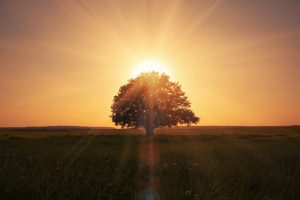By – James M. Katz, BA
Holistic nursing represents a transformative approach to patient care, integrating mind, body, and spirit to promote overall well-being. This comprehensive healthcare model views patients as whole persons, not just a collection of symptoms or diagnoses. Holistic nurses embrace a philosophy that emphasizes the interconnectedness of physical, emotional, and spiritual health, aiming to provide care that addresses all aspects of a person’s life.
What sets holistic nursing apart is its focus on creating a healing environment and empowering patients to take an active role in their health journey. This approach has gained recognition for its ability to enhance patient outcomes and satisfaction. From conducting holistic assessments to implementing integrative care techniques, holistic nurses play a crucial role in modern healthcare. They use a variety of methods, including mind-body techniques and spiritual care, to support patients’ healing processes and promote long-term wellness.
Key Takeaways
- Holistic nursing treats the whole person, including their body, mind, spirit, and emotions.
- This type of nursing helps patients feel more in control of their health and well-being.
- Holistic nurses use many different methods, including alternative therapies like acupuncture and massage.
- Patient-centered care is a big part of holistic nursing, making patients active participants in their healthcare.
- Holistic nursing can lead to better health outcomes and lower healthcare costs.
Historical Perspective of Holistic Nursing
Early Practices
The roots of holistic nursing trace back thousands of years, with ancient healing traditions recognizing the interconnectedness of mind, body, and spirit. Traditional Chinese Medicine (TCM), originating nearly 5,000 years ago, viewed the human body as a microcosm of interconnected systems, including physical elements and subtle energies like “qi” (life force) and “shen” (spirit) . Similarly, Ayurveda, the ancient medical tradition of India, incorporated beliefs in the five great elements of the universe and the seven primary constituent elements of the body.
In the Western world, Hippocrates, often referred to as the father of medicine, emphasized the healing power of nature in the 4th century B.C. He believed in encouraging the body’s self-healing efforts, an approach that aligns closely with modern holistic nursing principles. This holistic paradigm has been present in healthcare systems across various cultures and can be applied to diverse areas of nursing care, including medical-surgical, mental health, obstetric, pediatric, and public health nursing.
Evolution of the Concept
The concept of holistic care in nursing has evolved significantly over time. Florence Nightingale, considered the founder of both modern and holistic nursing, stressed the importance of nature in the healing process. She taught her students to focus on wellness, unity, and the interrelationship between individuals and their environment. Nightingale’s teachings laid the foundation for what would later become known as holistic nursing.
Throughout the 1700s and into the mid-1900s, nursing was grounded in holistic care principles. Practitioners used various therapeutic approaches, including water therapy, homeopathy, and acupressure, a non-invasive form of acupuncture that has been common in traditional Chinese medicine for the last 3,000 years. Nursing textbooks routinely included medicinal plant theory, emphasizing the importance of considering the whole person in care.
However, the mid-to-late 1900s saw a shift in focus. As technological advancements changed medicine from a service to a for-profit business, many holistic theories were abandoned. The discovery of germs as disease-causing agents led Western medicine to become thoroughly focused on intervention. Diseases were treated as invaders to be destroyed with medicines like penicillin, and physicians paid less attention to healthy lifestyle choices, environmental factors, and emotional health.
Modern Interpretations
The limitations of the purely interventional approach became clear by the late 20th century. Some scientific medical cures proved more harmful than the diseases they sought to treat, while other diseases and chronic conditions failed to respond to scientific treatment. This realization led to a renewed interest in holistic health education in the West.
In 1975, the first National Conference on Holistic Health was conducted in California, marking a significant milestone in the revival of holistic practices. Soon after, the American Holistic Health Association (AHHA) and the Holistic Medical Association were formed, further solidifying the place of holistic approaches in modern healthcare.
The American Holistic Nurses Association (AHNA) was founded in 1980 to serve as a voice for holistic nurses and to promote education in the philosophy, practice, and research of holistic caring and healing . In 1997, the American Holistic Nurses Certification Corporation (AHNCC) was established to credential holistic nurses, further legitimizing the field.
Today, holistic nursing is recognized by the American Nurses Association (ANA) as a nursing specialty with a defined scope and standards of practice. It is based on a unique body of knowledge, evidence-based research, sophisticated skills, defined standards of practice, and a philosophy grounded in caring, relationship, and interconnectedness. This recognition distinguishes holistic nursing from general nursing practice and acknowledges its unique contribution to the health and healing of people and society.
The Five Core Values of Holistic Nursing
Holistic nursing is grounded in a comprehensive approach to patient care that integrates the mind, body, and spirit. The American Holistic Nurses Association (AHNA) has established five core values that form the foundation of holistic nursing practice. These values guide nurses in providing compassionate, patient-centered care that addresses the whole person.
Holistic Philosophy and Education
The first core value emphasizes the importance of a holistic philosophy and ongoing education. Holistic nursing is based on a philosophical framework that embraces holism and a commitment to continuous learning. This approach recognizes that for human beings, the whole is greater than the sum of its parts, acknowledging the interdependence of biological, social, psychological, and spiritual aspects. Holistic nurses are encouraged to seek and acquire knowledge and skills pertinent to their practice, maintaining professional records that provide evidence of competency and lifelong learning.
Holistic Ethics, Theories, and Research
The second core value underscores the significance of ethics, nursing theories, and research in guiding holistic nursing practice. Holistic nurses are expected to practice within the profession’s ethical code and use current knowledge, including research findings, to expand their clinical practice and professional performance. The AHNA supports both quantitative and qualitative research to expand the body of knowledge in holistic nursing. This core value emphasizes that professional nursing is grounded in theory, informed by research, and bound by ethical principles to ensure competent and principled practice.
Holistic Nurse Self-Care
Self-care is a crucial aspect of holistic nursing. This core value recognizes that to facilitate healing in others, nurses must first undertake healing within themselves. Holistic nurses are encouraged to engage in various self-care practices, including mind-body techniques, good nutrition, exercise, and lifelong learning. Regular mindfulness practices and meditation have been shown to increase compassion and decrease burnout among nurses. By valuing and practicing self-care, holistic nurses can effectively manage physical and emotional stressors, becoming more effective caregivers and healers.
Holistic Communication and Environment
The fourth core value focuses on holistic communication, creating a therapeutic environment, and cultural competence. This value emphasizes the importance of engaging with clients to promote mutually-determined goals for health and healing. Holistic care respects human dignity and is based on a relationship of respect, relative openness, equality, and mutuality between healthcare providers and patients. Holistic nurses are expected to possess knowledge of cultural traditions and use this understanding to provide culturally competent care.
Holistic Caring Process
The final core value centers on the holistic caring process, which is an evolution of the traditional nursing process. This approach emphasizes assessment and therapeutic care that addresses client patterns, problems, and needs in an atmosphere of caring. Holistic nurses recognize the complex dynamic relationship between health, illness, and wellness, and value healing as a central component of their practice. They act as guides in the healing process, protecting patient dignity and recognizing that the patient is the authority on their own health experience.
By adhering to these five core values, holistic nurses can provide comprehensive care that goes beyond treating physical symptoms. This approach has been shown to improve patient satisfaction, increase the depth of care providers’ understanding of patients and their needs, and enhance patients’ self-awareness and self-confidence. As the healthcare landscape continues to evolve, these core values serve as a guiding framework for nurses committed to providing holistic, patient-centered care.
Assessing Patients Holistically
Holistic assessment in nursing is a comprehensive approach to evaluating a patient’s overall health and well-being. It goes beyond traditional methods by considering various aspects that may impact a person’s health, including physical, mental, social, financial, and environmental factors . This approach aligns with the philosophy of holistic nursing, which aims to heal the whole person.
Physical Assessment
The physical assessment is a crucial component of holistic nursing. It examines an individual’s overall physical condition, including any medical conditions, medications being taken, and physical limitations that may affect daily activities. Nurses conduct thorough physical examinations and may use diagnostic tests to gather comprehensive information about the patient’s health status.
During this assessment, nurses also evaluate the patient’s lifestyle choices and habits, such as exercise, nutrition, and sleep patterns. This information helps create a more complete picture of the patient’s physical health and identifies areas for potential improvement.
Psychological Evaluation
A holistic assessment includes a thorough evaluation of the patient’s mental and emotional well-being. This involves assessing the patient’s psychological status, including any mental health conditions or disorders. Nurses may use various tools and techniques to gather information about the patient’s emotional state, cognitive functioning, and overall mental health.
The psychological evaluation also considers the patient’s social support network and living conditions, as these factors can significantly impact mental health. By understanding the patient’s psychological state, nurses can better address their emotional needs and provide appropriate support or referrals for mental health services.
Spiritual and Cultural Considerations
Spiritual and cultural aspects are integral to holistic nursing assessments. Nurses recognize the importance of spiritual comfort and aim to respond to all patients’ spiritual needs, regardless of their religious beliefs. This approach is consistent with the ethical codes of professional nursing organizations and the International Council of Nurses.
When assessing spiritual needs, nurses consider the patient’s beliefs, values, and cultural background. They may inquire about the patient’s spiritual practices, sources of meaning and purpose, and any spiritual concerns related to their health condition. This information helps nurses provide culturally competent care and address the patient’s spiritual needs as part of their overall treatment plan.
It’s important to note that spirituality is often viewed in broad terms and is not necessarily connected to organized religion. Nurses should be prepared to engage with patients from diverse spiritual backgrounds and respect their individual beliefs and practices.
The holistic assessment process emphasizes person-centered care and mutual goal-setting. Instead of focusing solely on the most acute medical issue, nurses engage in extensive conversations with patients, covering various aspects of their lives. This collaborative approach allows nurses and patients to work together to establish wellness goals and determine the best strategies for achieving them.
By conducting holistic assessments, nurses can gain a deeper understanding of their patients’ unique challenges, strengths, and goals. This comprehensive approach has several benefits, including increased communication between nurses and patients, improved patient satisfaction, and potentially better health outcomes. Patients often feel more valued and engaged in their care when their beliefs and values are respected, and they are encouraged to actively participate in crafting their care plans.
However, it’s worth noting that implementing holistic assessments can be challenging. Nurses may face time constraints, lack of training, or uncertainty about their role in providing spiritual care. Additionally, cultural and religious differences between nurses and patients may affect the ability to provide comprehensive spiritual care. Despite these challenges, the growing emphasis on holistic care in nursing underscores the importance of addressing patients’ physical, psychological, and spiritual needs for optimal health outcomes.
The Importance of Holistic Nursing in Healthcare
Patient Empowerment
Holistic nursing helps patients take charge of their own health. By looking at the whole person, not just their illness, nurses can guide patients to make better lifestyle choices. This makes patients feel more in control and involved in their care. When patients understand their health better, they are more likely to follow treatment plans and manage their conditions effectively.
Improved Health Outcomes
When nurses consider a patient’s physical, emotional, and spiritual needs, the care they provide is more complete. This approach can lead to better health results. Patients who feel understood and supported are more likely to stick with their treatments and see improvements in their health. Holistic nursing also helps in preventing and managing long-term illnesses like heart disease and diabetes.
Stress and Emotional Well-being
Stress and emotions play a big role in a person’s health. Holistic nurses know this and work to help patients manage stress and improve their emotional well-being. By addressing these factors, nurses can help reduce the risk of chronic diseases and improve overall health. This kind of care makes patients feel more balanced and less anxious, which is good for their overall well-being.
Implementing Holistic Care Plans
Implementing holistic care plans is a comprehensive approach that considers the physical, mental, emotional, and social aspects of a patient’s well-being. This method aligns with the World Health Organization’s definition of health as “a state of physical, mental, and social well-being and not merely the absence of disease or infirmity” . Holistic care plans are particularly crucial in an aging society with limited economic resources, where integrated support for individuals with chronic or long-term conditions is essential.
Goal Setting
Setting health goals is a fundamental component of a holistic care plan. Goals provide patients with clear direction, motivation, and a sense of purpose. When establishing wellness goals, it’s important to consider various aspects of health, including nutrition, exercise, sleep, stress management, and mental well-being. This ensures a balanced approach to overall wellness.
To make goals more effective, they should be specific and measurable. This clarity provides a roadmap for the patient’s wellness journey. For instance, instead of a vague goal like “exercise more,” a specific goal could be “walk for 30 minutes five days a week.” Breaking larger wellness goals into smaller, achievable steps can make them more manageable and less overwhelming.
Collaborative Approach
Holistic care plans necessitate collaboration between various stakeholders, including healthcare professionals, social care providers, patients, and their families. This collaborative approach is crucial, especially for older adults who often face complex, interrelated problems encompassing physical, psychological, and social health.
The American Nursing Association (ANA) defines holistic care as an integration of body, mind, emotion, spirit, sexual, cultural, social, energetic, and environmental principles and modalities to promote health, increase well-being, and actualize human potential. This definition underscores the need for a multidisciplinary approach in implementing holistic care plans.
Collaboration in healthcare settings, whether in an emergency room or a public health setting, is essential. Public health initiatives often require an even higher level of collaboration due to the broad scope of healthcare initiatives they encompass. The complexity of community health challenges necessitates more than traditional healthcare delivery models, considering factors such as social determinants of health (SDOH).
Personalized Interventions
Personalized interventions are a key aspect of holistic care plans. The ‘Partnering in Healthcare’ framework emphasizes understanding the whole person (or family), including their physical, cultural, and social context, as well as differences in health, wellbeing, and safety. This approach involves putting people and families at the center of care, providing emotional support and empathy, involving family and friends, and showing compassion and respect.
Specific, measurable actions associated with personalized care include building relationships through active listening, expressing caring and empathy, and personalizing care practices such as including family, knowing the patient, and eliciting and respecting patients’ values. These personalized interventions contribute to improved patient satisfaction and enhanced quality of care.
Implementing holistic care plans requires consistent monitoring and adaptation. As patients work toward their wellness goals, it’s essential to be prepared to adjust the plan as needed. Life is dynamic, and a holistic care plan should be flexible enough to evolve with changing circumstances. Regular progress assessments help patients stay on track and allow for necessary adjustments to the care plan.
By implementing comprehensive, collaborative, and personalized holistic care plans, healthcare providers can enhance patient outcomes, improve quality of life, and potentially reduce healthcare costs by preventing complications and shortening hospital stays.
Mind-Body Techniques in Holistic Nursing
Meditation and Mindfulness
Meditation and mindfulness practices have gained significant popularity in holistic nursing due to their numerous health benefits. These ancient techniques, rooted in Eastern traditions, focus on mind-body integration and are used to calm the mind and enhance overall well-being. Meditation involves maintaining mental focus on a particular sensation, such as breathing, a sound, or a visual image, while mindfulness emphasizes maintaining attention on the present moment without judgment.
The prevalence of meditation practice among U.S. adults has more than doubled between 2002 and 2022, from 7.5% to 17.3%. This increase in popularity is likely due to the growing body of evidence supporting its effectiveness in managing various health conditions. Studies have shown that meditation and mindfulness practices can help reduce symptoms of anxiety, depression, and stress. They have also been found to be effective in managing chronic pain, improving sleep quality, and enhancing cognitive function.
In holistic nursing, meditation and mindfulness techniques are often incorporated into patient care to promote relaxation, reduce stress, and improve overall well-being. These practices can be particularly beneficial for patients dealing with chronic conditions, cancer, or mental health issues.
Guided Imagery
Guided imagery is a mind-body-spiritual technique that directs one’s imagination toward a relaxed, positive state to promote health. In this practice, a holistic nurse uses spontaneous speech or follows a script to guide the patient’s imagination, creating positive mental images that aid in relaxation, stress reduction, and a sense of empowerment.
Research has shown that guided imagery can have powerful effects in various healthcare settings. Studies have found significant decreases in systolic blood pressure, pulse rate, and perceived stress levels among healthcare workers after guided imagery sessions. In nursing practice, guided imagery has been used to reduce patients’ anxiety before invasive procedures and decrease postoperative pain.
A systematic review of relaxation, meditation, and guided imagery techniques found that these strategies reduced physical discomfort and improved quality of life in patients with heart failure. Participants experienced less dyspnea and fewer sleep disturbances compared to those receiving typical medical care.
Biofeedback
Biofeedback is an alternative medicine approach that teaches individuals to change the way their body functions. It is a mind-body therapy that may improve physical and mental health by providing real-time feedback on physiological functions such as heart rate, breathing, and muscle tension.
During a biofeedback session, a healthcare provider uses noninvasive monitoring equipment to measure involuntary bodily functions. Based on the feedback from these instruments, the provider suggests ways for the patient to create voluntary changes in these functions. With practice, patients can learn to make these bodily changes without equipment.
Biofeedback can be particularly useful in managing symptoms of certain conditions. It has shown efficacy in relieving pain and anxiety, making it a valuable tool in stress reduction. A study conducted in the emergency department confirmed that biofeedback was easily adaptable to various environments.
In holistic nursing practice, biofeedback can be used to help patients manage various health issues, including chronic pain, headaches, and stress-related conditions. By learning to control certain physiological processes, patients can gain a sense of empowerment and take an active role in their healing process.
Spiritual Care in Holistic Nursing
Spiritual care is an essential component of holistic nursing, addressing the patient’s search for meaning and purpose in life. It goes beyond physical manipulation or pharmaceutical medication, extending into a person’s environment, emotions, and spiritual health. Spirituality encompasses a sense of connection to something greater than oneself and typically involves a search for meaning and purpose in life.
Addressing Spiritual Needs
Nurses play a crucial role in assessing, diagnosing, and responding to the spiritual needs of each patient and their significant others. To provide effective spiritual care, nurses need to conduct spiritual assessments, recognize the difference between religious and spiritual needs, and identify appropriate interventions.
Spiritual assessments involve asking patients open-ended questions to evaluate their spiritual needs. Nurses can incorporate these identified needs into the patient’s care plan, using relationships, therapeutic communication, and physical therapeutic interventions.
Spiritual care interventions can take various forms, including:
1. Praying with or for the patient
2. Offering a supportive presence
3. Facilitating the practice of the patient’s religion
4. Exploring alternatives to challenges
5. Promoting forgiveness
6. Assisting patients in exploring realistic expectations of themselves
7. Promoting deeper expression of feelings and emotions through therapeutic communication
Cultural Competence
Cultural competence is crucial in providing spiritual care, as it allows nurses to effectively interact with people from different cultural backgrounds. It involves understanding and appreciating various cultural, racial, ethnic, gender, and sexual identities.
To develop cultural competence, nurses should:
1. Be aware of their own cultural worldview
2. Maintain a positive attitude toward cultural differences
3. Continuously improve their knowledge of different cultural practices and worldviews
4. Develop cross-cultural skills
Establishing common ground is vital in culturally competent spiritual care. Nurses can share their own experiences and work in diverse environments to foster a sense of belonging. Learning new languages can help address language gaps in healthcare, which often negatively impact patient outcomes and satisfaction.
End-of-Life Care
Spiritual care is particularly important in end-of-life situations, where patients and their families often experience spiritual distress. Hospice and palliative care nurses providing spiritual care have reported lower stress levels and reduced burnout.
In end-of-life care, nurses can help patients find hope, meaning, and inner peace through various interventions:
1. Promoting physical relaxation
2. Enhancing self-awareness
3. Facilitating a greater sense of connection with others
4. Encouraging forgiveness
5. Fostering a more cooperative attitude
These interventions can lead to increased physical healing, pain reduction, and personal growth.
Many healthcare facilities employ professionally trained chaplains to assist with the spiritual, religious, and emotional needs of patients, family members, and staff. Chaplains can meet with individuals regardless of their belief systems and can be instrumental in reducing anxiety and distress.
By addressing patients’ spiritual needs, nurses can improve health outcomes, quality of life, and help patients cope with the stress and suffering associated with serious illness and end-of-life experiences. Through therapeutic presence, unconditional acceptance, and compassion, nurses provide spiritual care that helps patients find hope and meaning in their life experiences.
Measuring Outcomes in Holistic Nursing
Measuring outcomes in holistic nursing is essential for evaluating the effectiveness of care and improving patient well-being. This process involves assessing various aspects of a patient’s health, including physical, mental, emotional, and spiritual dimensions. By utilizing comprehensive assessment tools and focusing on patient-centered outcomes, holistic nurses can gain valuable insights into the impact of their interventions.
Quality of Life Indicators
Quality of life is a crucial aspect of holistic nursing care. The World Health Organization defines quality of life as “an individual’s perception of their position in life in the context of the culture and value systems in which they live and in relation to their goals, expectations, standards and concerns”. To measure this multifaceted concept, the WHOQOL Group developed the WHOQOL assessment, which aims to evaluate quality of life across different cultures.
Quality of life indicators in holistic nursing often encompass:
1. Physical health and functioning
2. Psychological well-being
3. Social relationships
4. Environmental factors
5. Spiritual and existential aspects
These indicators provide a comprehensive view of a patient’s overall well-being and can help guide interventions and care planning.
Patient Satisfaction
Patient satisfaction is another crucial outcome measure in holistic nursing. It reflects the extent to which patients feel their needs and expectations have been met during their care experience. A study conducted in Saudi Arabia found that cancer patients’ https://www.ncbi.nlm.nih.gov/pmc/articles/PMC7219452/ satisfaction with holistic care approach was a good measurement of the quality of care.
The study revealed that patients’ satisfaction with holistic care ranged from very satisfied to satisfied across four aspects:
1. Physical care
2. Emotional support
3. Social assistance
4. Spiritual care
Interestingly, the study found significant differences in satisfaction levels for social and spiritual aspects when grouped by age, with a p-value of 0.001. This highlights the importance of tailoring holistic care approaches to different age groups and considering cultural factors in patient satisfaction.
Holistic Health Assessments
Holistic health assessments are comprehensive tools used to evaluate a patient’s overall well-being. These assessments consider various aspects of health, including physical, mental, social, and spiritual dimensions. The Holistic Health Assessment Tool for dialysis patients (HHAT-D) is an example of such an instrument developed to assess the holistic health status of patients on maintenance hemodialysis.
The HHAT-D evaluates:
1. Anthropometric measurements
2. Biochemical parameters
3. Functional status
4. Psychological status
5. Dietary intake
6. Coping strategies
In a study using the HHAT-D, researchers found that 73.3% of patients were mild to moderately malnourished. The tool showed a highly significant negative correlation between anthropometric measurements and HHAT-D scores (p<0.01), confirming its validity in assessing the degree of malnutrition.
Another example is the Holistic Health Status Questionnaire (HHSQ), which was developed to assess the holistic well-being of Chinese individuals with chronic diseases. This tool focuses on the interconnectedness of bio-psycho-social-spiritual dimensions and incorporates cultural attributes specific to Chinese populations.
By utilizing these comprehensive assessment tools, holistic nurses can gain a more complete understanding of their patients’ health status and tailor interventions accordingly. These assessments not only help in identifying areas of concern but also in tracking progress over time, ultimately leading to improved patient outcomes and quality of life.
Roles and Responsibilities of Holistic Nurses
Patient Interaction and Communication
Holistic nurses focus on building strong relationships with their patients. They make sure to learn each patient’s name, maintain eye contact, and show genuine compassion. This approach helps patients feel more comfortable and involved in their own healing process. By using techniques like imagery and relaxation, holistic nurses aim to reduce pain and stress without always relying on medication.
Assessment and Care Planning
Holistic nurses assess patients by considering their physical, emotional, and spiritual needs. They look at the whole person, not just the symptoms. This means they ask questions about lifestyle, diet, and even stress factors that might affect health. By understanding the complete picture, holistic nurses can create personalized care plans that address all aspects of a patient’s well-being.
Use of Alternative Therapies
In addition to traditional medical treatments, holistic nurses often use alternative therapies. These can include practices like massage, acupuncture, and meditation. Combining these methods with conventional medicine can offer a more comprehensive approach to healing. Holistic nurses are trained to know when and how to use these therapies to best support their patients’ overall health.
Challenges and Opportunities in Holistic Nursing
Integration with Traditional Medicine
Holistic nursing often faces the challenge of blending with traditional medical practices. While both aim to treat patients, their approaches can differ. Holistic nursing looks at the whole person, including their emotional and spiritual needs, while traditional medicine often focuses on physical symptoms. Finding a balance between these two can be tough but rewarding.
Regulatory and Legal Considerations
Holistic nurses must navigate a complex landscape of regulations and legal issues. Different states and countries have varying rules about what holistic practices are allowed. This can make it hard for nurses to know what they can and cannot do. Staying informed about these regulations is crucial for safe and effective practice.
Future Trends and Innovations
The field of holistic nursing is always evolving. New techniques and treatments are constantly being developed. This offers exciting opportunities for nurses to expand their skills and improve patient care. Keeping up with these trends can be challenging but also very rewarding. The future of holistic nursing looks bright, with many chances for growth and innovation.
Conclusion
Holistic nursing has a profound influence on patient care, integrating physical, mental, and spiritual aspects to promote overall well-being. This approach goes beyond treating symptoms, aiming to heal the whole person. By embracing core values like self-care, cultural competence, and a comprehensive caring process, holistic nurses create an environment that fosters healing and empowers patients to take an active role in their health journey. The implementation of holistic care plans and mind-body techniques further enhances the effectiveness of this patient-centered approach.
To sum up, the field of holistic nursing continues to evolve, with a growing emphasis on measuring outcomes and improving patient satisfaction. By using comprehensive assessment tools and focusing on quality-of-life indicators, holistic nurses can fine-tune their interventions and provide more effective care. As healthcare faces new challenges, the holistic approach offers a promising path to enhance patient outcomes, increase satisfaction, and promote long-term wellness. This practice not only benefits patients but also contributes to the professional growth and job satisfaction of nurses themselves.
Thinking of becoming a Holistic Healthcare Specialist? The American Institute of Health Care Professionals offers an excellent online holistic healthcare certification program available to license nurses (RNs). The program also requires completion of 5 online holistic nursing courses. For more information on this Holistic and Integrative Healthcare Specialist program please visit our main page
FAQs
- What is holistic nursing?
Holistic nursing is a type of nursing that focuses on healing the whole person. This means looking at a patient’s physical, emotional, spiritual, and social needs, not just their illness or symptoms.
- Why is holistic nursing important in healthcare?
Holistic nursing is important because it helps patients feel more in control of their health. By looking at the whole person, nurses can help improve overall health outcomes and address issues like stress and emotional well-being.
- What practices do holistic nurses use?
Holistic nurses use a variety of practices, including patient-centered care, complementary and alternative therapies like acupuncture and massage, and techniques that integrate mind, body, and spirit.
- What are the roles and responsibilities of holistic nurses?
Holistic nurses interact closely with patients, create personalized care plans, and often use alternative therapies. They focus on understanding the whole patient and helping them take an active role in their own care.
- How can one become a holistic nurse?
To become a holistic nurse, you need to have the required knowledge and skills, complete a certification program, and engage in continuing education to stay updated on holistic practices.
- What challenges do holistic nurses face?
Holistic nurses may face challenges like integrating their practices with traditional medicine, dealing with regulatory and legal issues, and staying updated with future trends and innovations in healthcare.
- What are the main principles of holistic nursing?
The five main principles of holistic nursing encompass holistic philosophy, theory, and ethics; the holistic caring process; holistic communication, therapeutic environment, and cultural diversity; holistic education and research; and holistic nurse self-care.
- What are the four domains of holistic care in nursing?
Holistic care in nursing is guided by a philosophy derived from humanism and holism, focusing on mutual understanding of a patient’s physical, psychological, emotional, and spiritual dimensions.
- Can you explain the holistic approach to patient care?
The holistic approach to patient care involves treating the entire person, addressing physical, mental, spiritual, and social needs. This method is based on the understanding that all these aspects are interconnected and impact overall health, with imbalances in one area potentially affecting others.
- What does the third core value of holistic nursing, the holistic caring process, entail?
The third core value, Holistic Nurse Self-care, emphasizes the importance of nurses engaging in self-care. This practice is crucial as it helps nurses promote health and personal awareness, enabling them to better serve and heal others.
Research Articles:
Holistic Nursing in Practice: Mindfulness-Based Yoga as an Intervention to Manage Stress and Burnout. Hilcove K, Et Al. Journal of Holistic Nursing. 2021;39(1):29-42.
Access link here
Phenomenology for the Holistic Nurse Researcher: Underpinnings of Descriptive and Interpretive Traditions. Patton CM. Journal of Holistic Nursing. 2020;38(3):278-286.
Access link here
 Written by Esme Wang.
Written by Esme Wang.






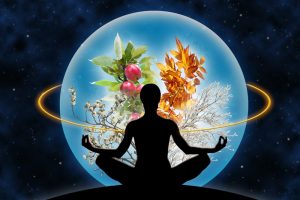


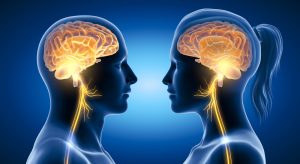
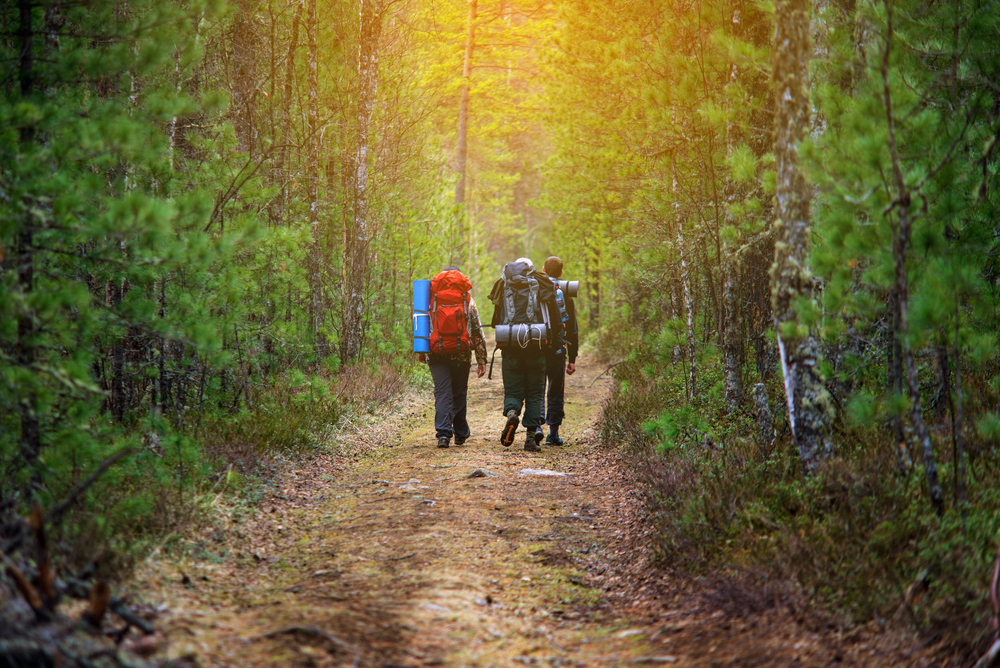 Written by Veronica Turner.
Written by Veronica Turner.

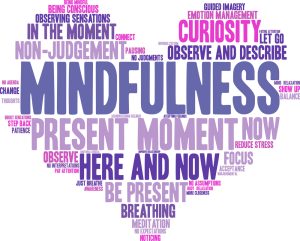

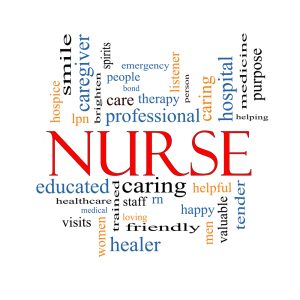
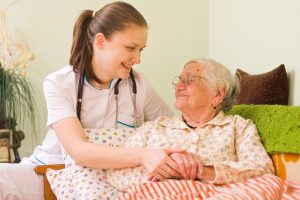 The future of meditation in holistic nursing is bright, with many chances for new research. Studies can explore how meditation helps different patient groups and conditions. Research can also look at how meditation affects long-term health and recovery. This will help nurses use meditation more effectively in their care plans.
The future of meditation in holistic nursing is bright, with many chances for new research. Studies can explore how meditation helps different patient groups and conditions. Research can also look at how meditation affects long-term health and recovery. This will help nurses use meditation more effectively in their care plans.